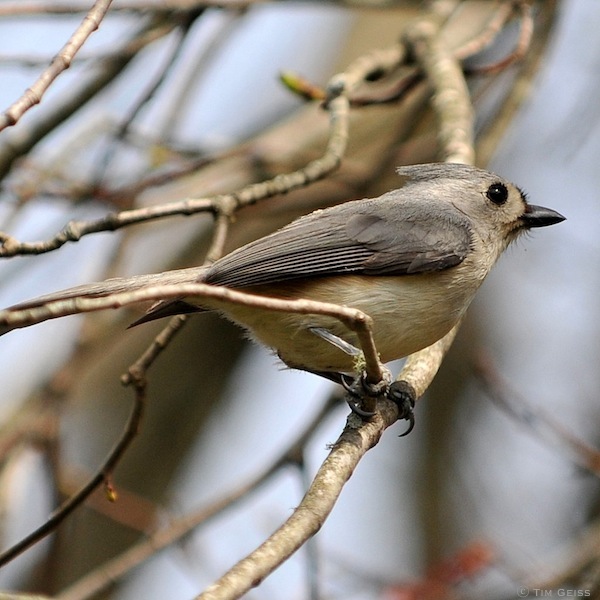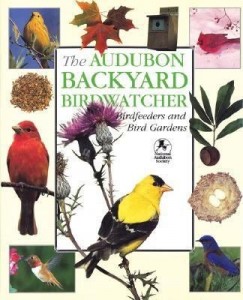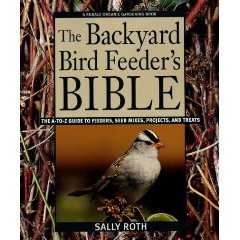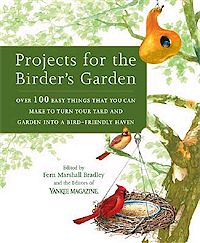Attracting, Supporting & Observing Wildlife in the Late Autumn Landscape
 Wild Turkey Wander in My Country Neighbor’s Meadow, Beyond the Roadside Saplings. Wild Turkey are Omnivores, Feeding on Fern Fronds, Buds, Seed, Fruit, Berries, Insects, Grubs and Amphibians. Turkey are Often Spotted in Open Fields, Pastures, Wetlands and Orchards by Day. By Night, Turkey Seek the Cover of Mixed Forest, Where They Roost in Trees. Find More Information About Wild Turkey on the Cornell Lab of Ornithology Website, Here.Â
Wild Turkey Wander in My Country Neighbor’s Meadow, Beyond the Roadside Saplings. Wild Turkey are Omnivores, Feeding on Fern Fronds, Buds, Seed, Fruit, Berries, Insects, Grubs and Amphibians. Turkey are Often Spotted in Open Fields, Pastures, Wetlands and Orchards by Day. By Night, Turkey Seek the Cover of Mixed Forest, Where They Roost in Trees. Find More Information About Wild Turkey on the Cornell Lab of Ornithology Website, Here.Â
One of the benefits of rising early  —and commuting to and from various landscaping projects in and around the backroads of southern Vermont— is the opportunity to spot wildlife in fields, rivers, and forests at the break of day. Deer, fox, turkey, squirrels and songbirds all tend to be on the move around sunrise and sunset. I enjoy watching wildlife in my garden, so I make an effort to attract birds and squirrels by providing feeders filled with supplemental food and shallow dishes of fresh water, in addition to naturally occurring berries and seeds provided by native species of trees and shrubs planted in my landscape.
In addition to his horticultural pursuits, my father is a lifelong, avid outdoorsman, and my interest in the northern forest and its wildlife was both inspired and encouraged by him. Although I now take for granted the ability to identify birds by both sight and sound, this information was slowly taught to me by my father, when I was very young. By placing a small bird feeder or two and source of water (such as a shallow, frost-proof birdbath), near the kitchen window, a child’s natural curiosity will be sparked by observing a source of wild activity. Once introduced to bird watching, learning to identify different species and recognize other wild creatures becomes an exciting challenge. Cornell’s Lab of Ornithology website, All About Birds is a free, and excellent source of accurate information for budding birders. In addition to feeders, planting even the smallest of backyard gardens will almost immediately attract a wide variety of creatures (some more welcome than others, no doubt), providing endless opportunities for kids to encounter and observe wildlife. Tips for creating bird habitat are available on the Cornell website, linked above. You may also want to check out the Audubon website and publications like Birds & Blooms Magazine (online and in print), for more backyard garden ideas.
 Ozzy, My Resident Red Squirrel, and His Friends Gather Each Morning to Forage Nuts and Seeds, Scattered About the Terrace. Red Squirrels are Most Commonly Spotted In and Around Native Conifer Forests (Particularly in Stands of Hemlock, Spruce and Fir). Read More About the Red Squirrel in My Previous Post, Here.
Ozzy, My Resident Red Squirrel, and His Friends Gather Each Morning to Forage Nuts and Seeds, Scattered About the Terrace. Red Squirrels are Most Commonly Spotted In and Around Native Conifer Forests (Particularly in Stands of Hemlock, Spruce and Fir). Read More About the Red Squirrel in My Previous Post, Here.
 Black-Capped Chickadees Seek Shelter in the Hedge of Physocarpus opulifolius, while Taking Turns at the Feeding Stations Below. Chickadees are Omnivores. The Natural, Late-Autumn & Winter Diet of a Black-Capped Chickadee Includes Foraged Seeds, Berries, Insects and Spiders. Chickadees Cache Food in Hidden Spots for Later Use. Learn More About This Curious, Social Bird on the Cornell Lab of Ornithology Website Here.Â
Black-Capped Chickadees Seek Shelter in the Hedge of Physocarpus opulifolius, while Taking Turns at the Feeding Stations Below. Chickadees are Omnivores. The Natural, Late-Autumn & Winter Diet of a Black-Capped Chickadee Includes Foraged Seeds, Berries, Insects and Spiders. Chickadees Cache Food in Hidden Spots for Later Use. Learn More About This Curious, Social Bird on the Cornell Lab of Ornithology Website Here.Â
New gardeners are often more focused on flowering plants, and pay less attention to the overall landscape. Yet, from a songbird or chipmunk’s perspective, the woody plants in your yard are of far greater significance. By planting deciduous trees, shrubs, conifers and ornamental grasses, gardeners can create vital shelter for birds and small animals in the landscape. When planning and planting new gardens, consider nut and fruit producing shrubs or small trees and seed producing ornamental grasses —particularly native species— as a backdrop to flowering perennials. If you enjoy seeing wildlife in your garden, leave seed producing perennial plants standing over the winter, to provide both food and cover for small creatures on the move. Resist the urge to cut or mow the wild, natural areas, for these are the spots to enjoy wildlife over the winter months. Visit the Audubon website for more ideas on how to create, protect and preserve natural, wildlife friendly areas in your community.
 Native Winterberry Branches (Ilex verticillata) Provide Sustenance for Hungry Birds, Squirrels and Other Creatures. Find More Garden-Worthy, Fruit and Seed Producing Plants in My Previous Post, Here.
Native Winterberry Branches (Ilex verticillata) Provide Sustenance for Hungry Birds, Squirrels and Other Creatures. Find More Garden-Worthy, Fruit and Seed Producing Plants in My Previous Post, Here.
 Native, Broadleaf Cattail Provides Excellent Habitat for Wildlife (Typha latifolia). There is Much Debate Surrounding the Native Status of Narrow-Leaf Cattail (T. angustifolia) and the resulting hybrid between it an T. latifolia, T. x glauca. Although Some Consider Cattails “Invasive”, In Addition to Providing Food and Habitat for Wildlife, They Also Help Stabilize Wetlands and Filter Pollutants from Moving Water. When Choosing Cattails for the Landscape, The NWFS Suggests Planting the Confirmed, Native Broadleaf Species (T. latifolia).
Native, Broadleaf Cattail Provides Excellent Habitat for Wildlife (Typha latifolia). There is Much Debate Surrounding the Native Status of Narrow-Leaf Cattail (T. angustifolia) and the resulting hybrid between it an T. latifolia, T. x glauca. Although Some Consider Cattails “Invasive”, In Addition to Providing Food and Habitat for Wildlife, They Also Help Stabilize Wetlands and Filter Pollutants from Moving Water. When Choosing Cattails for the Landscape, The NWFS Suggests Planting the Confirmed, Native Broadleaf Species (T. latifolia).
 Staghorn Sumac (Rhus typhina) Is An Important Source of Food for Wildlife; Including Crow and Other Over-Wintering and Migratory Birds. Read More Here.
Staghorn Sumac (Rhus typhina) Is An Important Source of Food for Wildlife; Including Crow and Other Over-Wintering and Migratory Birds. Read More Here.
 Nuthatch Foraging on Tree Bark. Photo ⓒ Tim Geiss
Nuthatch Foraging on Tree Bark. Photo ⓒ Tim Geiss
 Sapsucker Visiting a Suet Feeder. Photo ⓒ Tim Geiss
Sapsucker Visiting a Suet Feeder. Photo ⓒ Tim Geiss
 Titmouse Lighting on the Branch of a Backyard Tree ⓒ Tim Geiss
Titmouse Lighting on the Branch of a Backyard Tree ⓒ Tim Geiss
Some Additional, Excellent Resources for Gardeners and Wildlife Enthusiasts …
 The Audubon Backyard Birdwatcher: Birdfeeders and Bird Gardens
The Audubon Backyard Birdwatcher: Birdfeeders and Bird Gardens
 The Backyard Bird Feeder’s Bible: The A-to-Z Guide To Feeders, Seed Mixes, Projects, And Treats (Rodale Organic Gardening Book)
The Backyard Bird Feeder’s Bible: The A-to-Z Guide To Feeders, Seed Mixes, Projects, And Treats (Rodale Organic Gardening Book)
 Projects for the Birder’s Garden: Over 100 Easy Things That You can Make to Turn Your Yard and Garden into a Bird-Friendly Haven
Projects for the Birder’s Garden: Over 100 Easy Things That You can Make to Turn Your Yard and Garden into a Bird-Friendly Haven
 Special Bird Photographs Taken for This Post Are, As Noted, â“’ Tim Geiss. All Other Photography and Text â“’ Michaela Medina/The Gardener’s Eden. All images, articles and content on this site (with noted exceptions), are the original, copyrighted property of The Gardener’s Eden and may not be reposted, reproduced or used in any way without prior written consent. Contact information is in the left side bar. Please do not take my photographs without asking first. Thank you!Â
Do you enjoy The Gardener’s Eden? You can help support this site by shopping through affiliate links. A small percentage of each sale will be paid to this site, helping to cover web hosting and maintenance costs. Thank you so much for your support!
One Reply to “Attracting, Supporting & Observing Wildlife in the Late Autumn Landscape”
Comments are closed.

Thank you for this lovely post. I have learned so much from your site and I think my small garden has gathered great benefit from the information I have found here (including this year’s planting of euphorbia ‘bonfire,’ and ornamental grasses). Through you, I have also learned about Piet Oudolf and about how to bring a bit of the wild into my outdoor living environment (as well as consider creative plantings for inside). In celebration, I put a bird feeder in another one of our small trees today. Happy winter gardening!